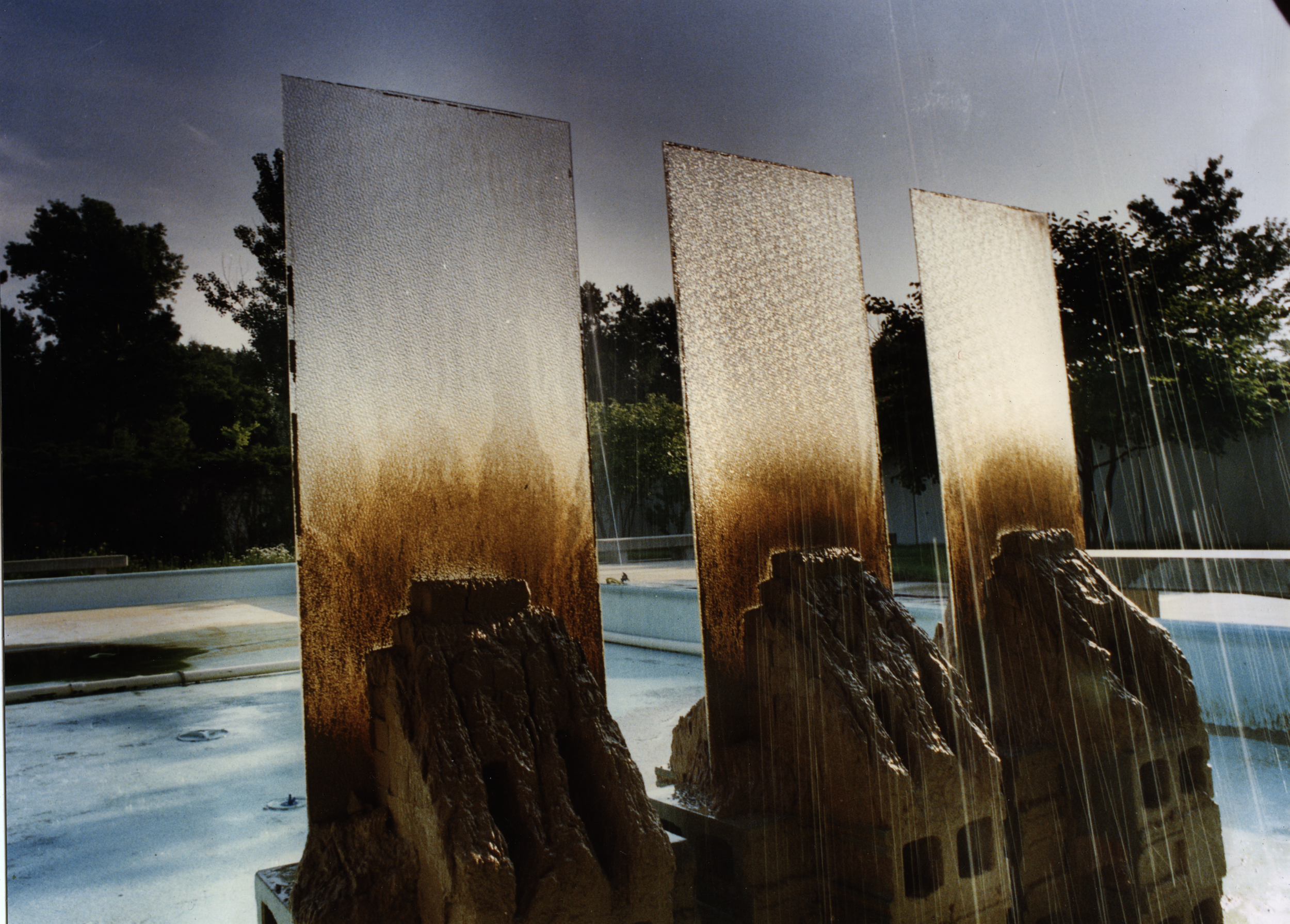Tornado
At the top of the stairs on the fifth floor there was a corridor. The windows on the left allowed a brilliant view of the small city. I walked down the corridor past three doors on the right that had the numbers ‘4’ ‘6’ and ‘8’ stenciled onto the diffused glass in their centers.
I was in an abandoned building. I explored each room but came up with nothing as captivating as the diffused windows with their stenciled numbers. I decided to remove the glass from the doors. It took several hours of careful work. I took each piece of glass and treating them like jewels descended the five flights of stairs and took them to the studio.
Concurrent with this several other things occured. First the local university commissioned me to make a temporary sculpture for their campus and I chose a fountain outside their library.
The second, and more important thing was that I met Kazuaki Sugi.
And third, quite arbitrarily I stumbled upon a brick factory making clay bricks about two miles from my studio. They had been there for many years, providing the building blocks of the city.
Sugi was a skilled young ceramicist working for an older more established ceramicist. He worked long hours punching clay in preparation for his master’s creations - massive coiled vase-like obilesks destined for the airports and corporate forecourts of the world. There was nothing wrong with them, they were beautiful, except that for me they represented stasis. And the clay they were made from did not. Watching Sugi prepare the wet malleable clay triggered an idea and I asked the brick factory for a pallet of dried but unfired clay bricks – and they said yes - take them.
So I had three elemental materials; the glass collected from the abandoned offices, the unfired clay brick from the factory and the sprayed water from the fountain. Plus I had a site, a library with great big picture windows looking out onto the fountain that guaranteed an audience who would perhaps welcome an occasional distraction from their studies.
The bricks held the beautiful old sheets of glass in place while the water from the fountain casually eroded the brick. There was an inevitable conclusion to this.
One day I was at the university documenting the progression of the piece and a tornado warning came in. Not that unusual for Omaha Nebraska. Literally hundreds of people ran to the basement shelters scattered around the campus. I couldn’t understand it; in those minutes I had no idea of the force that was potentially about to be unleashed, but I was fairly sure that whatever was about to happen would almost certainly destroy my installation and I definitely wanted documentation of that. So I stayed in the library, absolutely alone, focusing my camera as the daylight turned green. Two crows arrived and briefly squawked, yet another warning of impending doom and then flew off and out of it.
My ignorance was not punished by the storm. The tornado swayed off to the west leaving the city intact and my piece endured what turned out to be the periphery of a tornado. The green skies turned back to heavy grey and people began to emerge from the bunkers. I was heavily reprimanded by every university official conceivable and Tornado, as it became titled after this event, eventually gave way and smashed to the ground about a month later - on July Fourth - I would not remember the date if that was not the date.




